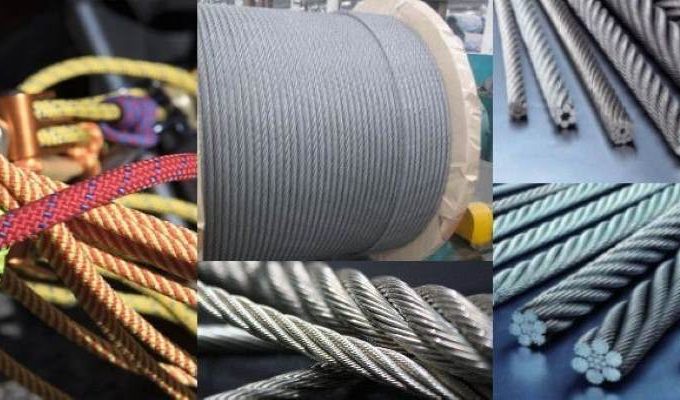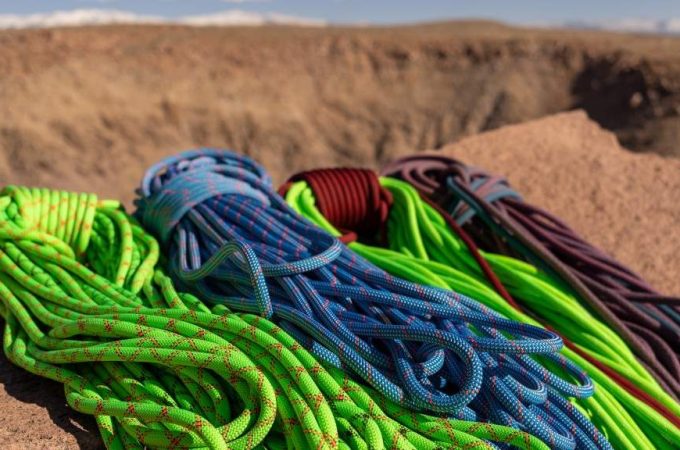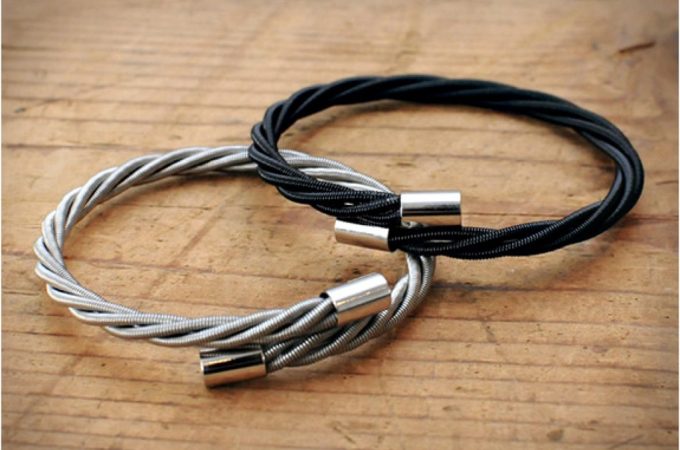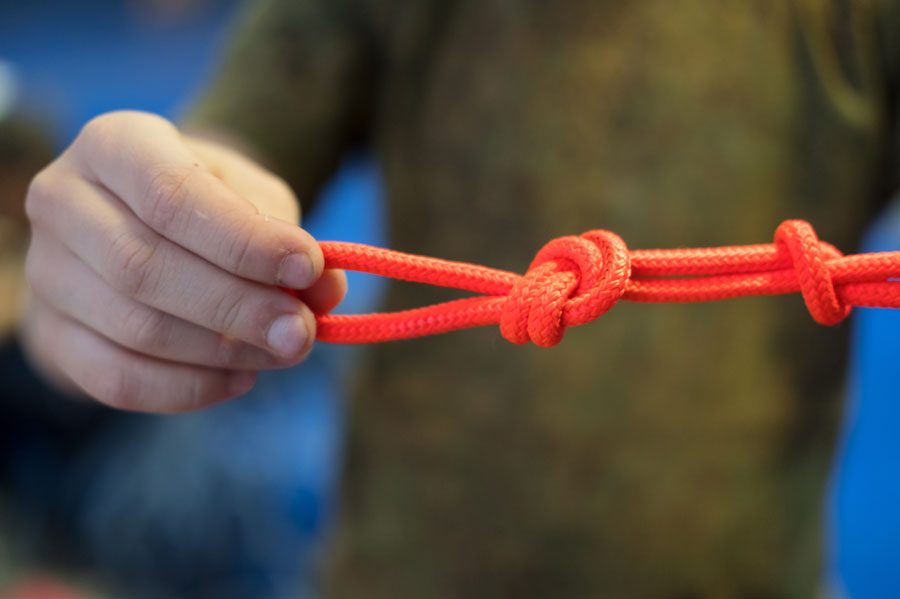
The Best Knot for Hammock Rope: Ultimate Security
The Bowline knot is renowned for its strength and reliability in securing hammock ropes. This knot remains easy to untie even after bearing a significant load.
Contents at a Glance
ToggleSelecting the right knot for a hammock rope is vital for both safety and ease of use. The Bowline has stood the test of time, widely recognized by outdoor enthusiasts and experts alike. Known for its simplicity and effectiveness, it can be tied and untied with ease, which is particularly useful in outdoor scenarios.
With a loop that neither slips nor jams, the Bowline knot provides a secure anchor point for your hammock, ensuring it can support weight without slipping. Whether you’re setting up a hammock in your backyard or at a campsite, mastering the Bowline knot is a fundamental skill for a secure and relaxing hang.
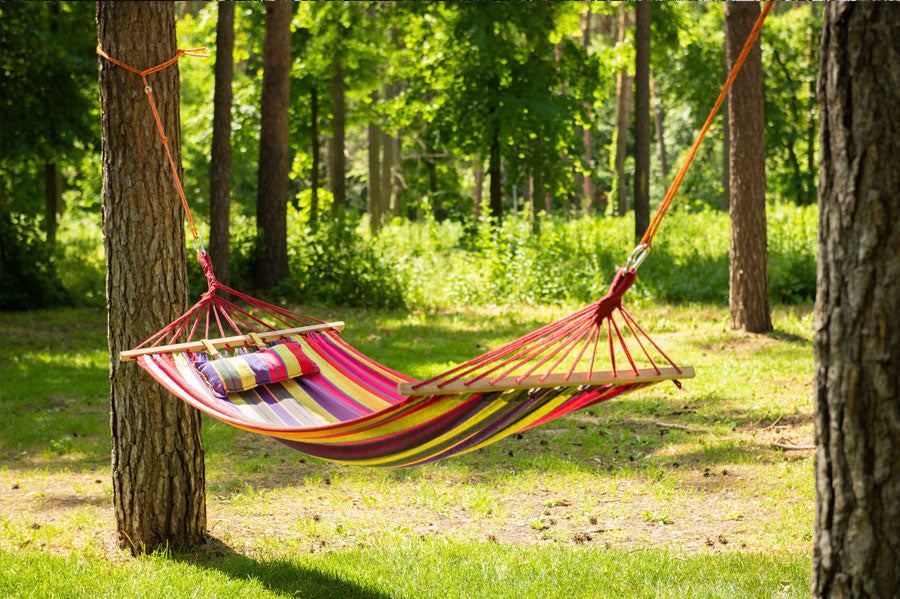
Credit: www.hammockuniverse.com
Introduction To Hammock Knots
Finding the perfect spot between two trees is only the beginning of your hammock adventure. The true skill lies in securely attaching your hammock to enjoy a tranquil rest without an unexpected tumble. Every hammock enthusiast must master the art of tying reliable knots. But don’t worry, you don’t need to be a sailor or a scout to secure your hanging haven; with a little guidance, anyone can learn the ropes!
Understanding The Importance Of Knot Security
A knot that gives way can transform a moment of relaxation into one of shock and possibly injury. Ensuring knot security is paramount when it comes to hammock setup. A secure knot will maintain its hold under your weight, resist slipping under tension, and also be easy to untie after use. It’s not just about staying off the ground; it’s about the peace of mind that comes with knowing you’re safe and supported.
Criteria For Selecting The Best Knot
Choosing the best knot for your hammock rope involves several considerations:
- Strength: The knot must be able to support your full weight without weakening.
- Stability: It should maintain its form and not slip, even when the hammock sways.
- Simplicity: The ideal knot is straightforward to tie and untie, saving time and effort.
- Versatility: A good hammock knot should be adaptable to different types of ropes and anchor points.
With these criteria in mind, we will explore knots that offer the best combination of security and simplicity for hammock enthusiasts.
Various Knots For Hammocks
Welcome to our exploration of the best knots for securing your hammock. Whether you’re setting up a relaxing retreat in your backyard or configuring a sleeping arrangement for a camping trip, choosing an appropriate knot can make all the difference in comfort and safety. From simple and quick-to-tie knots for beginners, to secure and complex knots for the experienced adventurer, this guide covers the most reliable options for your hammock setup needs.
The Bowline Knot: A Sturdy Choice
The Bowline knot is revered for its strength and stability. Known as the ‘king of the knots’, it creates a fixed loop that is ideal for the secure attachment points needed for a hammock. A primary advantage of the bowline is that it is easy to untie after bearing weight, which is perfect for quick dismantling of your relaxation station. Even if the knot gets wet, its integrity remains uncompromised.
Here’s a step-by-step guide on tying a Bowline Knot:
- Create a small loop in the standing part of the rope, leaving enough tail for the desired loop size.
- Pass the tail up through the loop, around behind the standing part, and then back down through the loop.
- Pull the tail to tighten the knot around the standing part while keeping the loop the desired size.
The Figure-eight Follow-through Knot: Reliable And Strong
The Figure-Eight Follow-Through knot is a favorite among climbers due to its high reliability and strength under tension. It’s just as effective for hammocks, particularly if you anticipate a lot of movement or stress on the connection points. The knot’s design prevents slippage and is easy to inspect, giving you peace of mind while you lounge.
Follow these steps to tie the Figure-Eight Follow-Through Knot:
- Tie a loose figure-eight knot at the end of the rope.
- Pass the free end through the hammock’s attachment point.
- Retrace the original figure-eight with the tail, following the path back through the knot.
- Ensure that the rope runs parallel to itself and tighten each strand individually.
The Sheet Bend: Connecting Lines Of Different Sizes
The Sheet Bend is particularly useful for hammocks in situations where you need to connect two ropes of unequal thickness. If you find yourself with a smaller rope that needs to attach to a larger one, this knot ensures they stay connected securely, vital for creating a robust hammock setup. Despite variations in rope size, the sheet bend maintains a firm hold.
To successfully tie a Sheet Bend, follow these instructions:
- Form a “bight” (a U-shaped bend) in the thicker rope to hold it in place.
- Pass the thinner rope through the bight from underneath.
- Wrap the thinner rope around the back of the thicker rope.
- Tuck the end of the thinner rope under its standing part, before the exit through the bight.
- Pull both ends of the thinner rope to tighten the knot against the bight.
Analyzing The Best Knot For Hammock Rope
Relaxing in a hammock is one of life’s simple pleasures, but the reliability of your hammock setup hinges on the knots you use. Selecting the right knot is crucial for both safety and comfort. One knot, in particular, provides exceptional stability and security necessary for a worry-free lounge. Let’s explore the virtues of the Buntline Hitch, a knot that is often overlooked but might just be the perfect choice for securing your hammock rope.
The Buntline Hitch has a storied history, tracing back to its nautical roots where it was used to fasten sails and secure ship lines. Its reputation for not slipping under tension makes it an excellent choice for hammock enthusiasts.
- Superior Security: Once tied, the Buntline Hitch is known for maintaining a strong grip, ensuring that your hammock stays in place.
- Weather Resistant: Even in harsh weather conditions, this hitch does not loosen, making it ideal for outdoor use.
- Versatility: Whether you’re dealing with thick ropes or slender cords, the Buntline Hitch is adaptable.
- Easy to Untie: Despite its gripping strength, this hitch is relatively easy to untie, which is convenient when it’s time to pack up your hammock.
- Hold the rope’s end and form a loop by twisting it away from you. Ensure the short end (the tail) is underneath the long end.
- Pass the tail up through the loop, creating a simple overhead knot.
- Bring the tail around the standing part of the rope and pass it down through the loop again.
- Hold the tail and the standing part of the rope parallel to each other and pull the loop tight by pushing it toward the knot.
- Keep the tail parallel to the standing line and pull both simultaneously to tighten the hitch around the hammock’s attachment point.
- For added security, you can finish with a half hitch near the loop.
The Buntline Hitch not only assures that your hammock will stay affixed, but it’s also a testament to the time-tested wisdom of sailors and adventurers alike. By mastering this knot, you elevate your hammock setup to a new level of reliability.
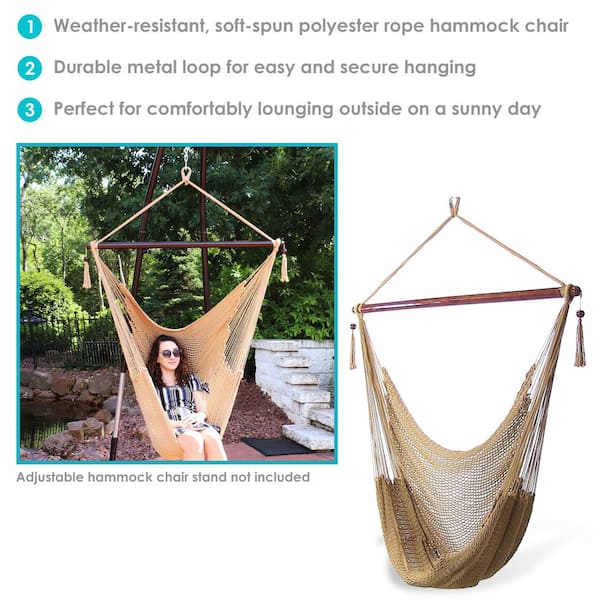
Credit: www.homedepot.com
Practical Tips For Hammock Knot Tying
Welcome to our detailed guide on practical tips for hammock knot tying, where comfort meets safety in the great outdoors. Nothing beats the serene experience of lounging in a hammock, but it’s crucial to secure your suspended bed safely to enjoy that peaceful swing. Understanding and executing the right knots ensures not only a snug hammock but also the durability of your gear. Dive into these expert tips designed to elevate your hammock game to new heights.
Testing Knot Security Before Use
Before settling into your hammock for a nap under the stars, the integrity of your knots must be tested. A loosening knot can lead to a sudden fall, which—not only disrupts your relaxation but can also cause injury. Here’s how to ensure your hammock holds firm:
- Double-check each knot by pulling on each end of the rope with significant force.
- Simulate your weight by pressing down on the hammock with your hands before fully reclining.
- Observe the knot as you apply pressure – it should tighten, not slip.
Once the knots pass your security check, you can rest easy, knowing you’re in safe hands.
Maintaining Rope Health For Lasting Knots
The longevity of your hammock knots ties directly to the health of your rope. A frayed or weak rope can compromise even the best-tied knot. Maintain your rope—and by extension, your knots—with these tips:
- Regularly inspect for signs of wear, like fraying or discoloration.
- Keep the rope clean, and free from dirt and oils that can degrade fibers.
- Avoid exposing the rope to long periods of sunlight, which can weaken it over time.
- Store your hammock and rope in a dry, cool place.
With a well-maintained rope, you’ll ensure repeated, dependable use.
Situational Considerations For Knot Selection
The environment and hanging conditions greatly influence which knot you should use for your hammock. No single knot reigns supreme in all scenarios. Consider these factors when selecting your knot:
| Situation | Knot Type |
|---|---|
| Wet conditions | Bowline – maintains strength when wet |
| Temporary setup | Taut-line hitch – adjustable and easy to untie |
| Load-bearing | Figure-eight follow-through – strong and durable |
Adjust your approach based on these situational demands to ensure the highest level of safety and functionality.
Conclusion: Ensuring A Safe And Relaxing Hammock Experience
Ensuring a safe and enjoyable hammock experience is paramount for any outdoor enthusiast. When you’ve found the perfect spot between two sturdy trees, the only thing standing between you and blissful relaxation is ensuring your hammock is secured correctly. Selecting the right knot can make all the difference.
Recap Of The Best Knot For Hammock Use
Selecting the best knot for your hammock isn’t just about convenience; it’s about safety and stability. Through this blog, we’ve explored the effectiveness of the Bowline Knot and the Figure-Eight Follow-Through — two knots that are both reliable and fail-safe for securing a hammock. These knots excel in their holding power and ease of untying after bearing weight, making them top recommendations for hammock enthusiasts.
Encouragement To Practice Knot-tying Skills
The art of knot-tying is essential for any outdoor activity. Practicing these skills enhances not only your hammocking experience but also your overall safety in various outdoor scenarios. Dedicate some time to mastering these knots at home before heading out. Your confidence will soar when you can efficiently secure your hammock, knowing it’s done right.
Final Thoughts On Hammock Safety
- Always inspect your equipment before use. Check for signs of wear and tear in both your hammock and rope.
- Choose the right trees: Healthy, living trees with a diameter of at least 12 inches are ideal anchors for a hammock.
- The importance of proper height placement cannot be understated. Your hammock should hang at a height where a fall would not result in injury.
- Regularly practice knot-tying to ensure your technique remains sharp and reliable.
A well-tied hammock is a haven of serenity. By focusing on the proper techniques and safety precautions, you’re set for a tranquil experience amidst the great outdoors. Happy hammocking!

Credit: www.amazon.com
Frequently Asked Questions On The Best Knot For Hammock Rope
What Kind Of Knot Hitch Is Commonly Used In Hammock?
The bowline and figure-eight follow-through knots are commonly used for securing hammocks. These reliable knots ensure a stable and safe hammock setup.
What Is The Best Knot For A Hammock Reddit?
The best knot for a hammock, according to Reddit users, is often the bowline knot for its strength and easy untying.
What Is The Most Secure Rope Knot?
The Bowline knot is renowned for its strength and security in various applications. It’s often cited as the most secure rope knot due to its reliability and ease of untying even after bearing heavy loads.
How Do You Tie The Strongest Rope Knot?
The strongest rope knot is the figure-eight follow-through, also known as the Flemish bend. Thread the rope’s end, form a figure-eight loop, re-thread the loop following the original path, and then tighten it securely.
Conclusion
Selecting the right knot is crucial for hammock stability and safety. The bowline has earned top marks for reliability and ease. It’s a strong choice that withstands the elements, ensuring peace of mind as you relax. Master this knot, and your hammock setup will be both secure and swift.
Happy hanging!


